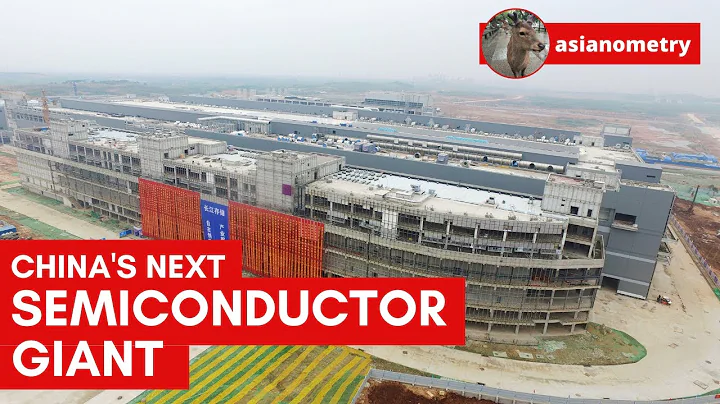
On September 8, the third-generation semiconductor sector continued to be strong. Qianzhao Optoelectronics, Yu Diamond, and Jucan Optoelectronics hit the daily limit, with an increase of 20%, and Luxiao Technology hit the daily limit. So what exactly is the third-generation semiconductor that is so popular? what is it used for? Which companies are the real beneficiaries? Beike Investment Research (ID: Beiketouyan) takes a look at some definite opportunities in the third-generation semiconductor industry.
1. Overview of the third-generation semiconductor industry
1. What is the third-generation semiconductor?
The third generation refers to the changes in semiconductor materials, transitioning from the first and second generations to the third generation.
The first generation of semiconductor materials: germanium and silicon are currently the largest semiconductor materials. They are relatively cheap and have the most mature process technology. Their application fields are in the information industry and microelectronics industry.
second-generation semiconductor materials: gallium arsenide and indium phosphide, mainly used in the communications industry and lighting industry.
Third-generation semiconductor materials: is represented by silicon carbide and gallium nitride, which can be used in higher-end high-voltage power components and high-frequency communication components. It is the main material in the 5G era.

2. In what fields are the third generation semiconductors used?
GaN and SiC can significantly improve the high-voltage, high-frequency, and high-power operating characteristics of electronic devices, and have great application prospects in military, new energy, electric vehicles and other fields. Although silicon carbide and gallium nitride are both third-generation semiconductor materials, their applications are slightly different.
GaN: Currently mainly used in the field of power devices, it will also have great application potential in the field of high-frequency communications in the future. In the future, when the 5G standard frequency exceeds 40GHz, gallium arsenide will not be able to bear the load and gallium nitride must be used.
SiC: Currently mainly used for high-temperature, high-frequency, high-efficiency high-power components, it has the advantages of high temperature resistance, corrosion resistance, and good thermal stability.
However, due to the high cost of SiC, the current mainstream of the third generation semiconductor is gallium nitride GaN.
The third generation of semiconductors is mainly used in power devices and radio frequency devices. It is mainly used in high-power power semiconductors. The market size is still relatively small. The mainstream mobile phone chips such as storage and circuits are still based on silicon, which is currently the largest market area.
3. How big is the market size of third-generation semiconductors?
According to data, global sales revenue of SiC and GaN power semiconductors is expected to increase from US$571 million in 2018 to US$854 million by the end of 2020. With double-digit annual growth rates over the next decade, it will exceed $5 billion by 2029.

According to Yole data, the SiC power semiconductor market will grow to US$2 billion by 2024. Among them, the automotive market will account for 50% of the SiC power semiconductor market by 2024.
4. The development status of third-generation semiconductors in China
The substrate technology of silicon carbide (SiC) is relatively simple. 4-inch mass production has been achieved domestically, and 6-inch research and development has been completed.
The preparation technology of gallium nitride (GaN) needs to be improved. Domestic companies can currently produce 2-inch substrates in small batches, have 4-inch substrate production capabilities, and are developing 6-inch samples.
5. Why is the third generation of semiconductors the hope of mainland China’s semiconductors?
First, third-generation semiconductors are in the early stages of development compared to first- and second-generation semiconductors. Domestic and international giants are basically at the same starting line.
Second, China has an application market for third-generation semiconductors, and products can be defined according to the market, instead of following international giants to make local substitutions.
Third, the difficulty of third-generation semiconductors is not in the equipment or logic circuit design, but in the process. Process development is accidental, and it is less difficult than logic chips.
Fourth, the equipment requirements are relatively low, the investment is small, and there can be many players in the country. Driven by capital, it can blossom all over the country, and there is a high probability that several third-generation semiconductor companies will eventually emerge.
The second and third generation semiconductor industry chain
Silicon carbide and gallium nitride are the core development directions of future power semiconductors. Global power semiconductor giants such as Infineon and ST, as well as domestic power manufacturers such as China Resources Micro and CRRC Times Semiconductor, are focusing on Place research in this field.
In order to develop power semiconductors, Huawei has also started the layout of third-generation semiconductor materials. Hubble Technology, a subsidiary of Huawei, invested in Shandong Tianyue in August 2019, holding a 10% stake. Shandong Tianyue is my country's leading third-generation semiconductor material silicon carbide company. It is located in Huaiyin District, Jinan City and has not yet been listed. .

(1) Sanan Optoelectronics
1. Gallium nitride business: Operated by its wholly-owned subsidiary Sanan Integration, its revenue in the first half of 2020 was 375 million yuan, a year-on-year increase of 680.48%. There are nearly 100 gallium arsenide RF shipment customers, and the production capacity of important customers of gallium nitride RF products is gradually climbing.
2. Silicon carbide business: Sanan Optoelectronics has set up a subsidiary in Changsha, Hunan Sanan, to engage in the research and development and industrialization projects of third-generation semiconductors such as silicon carbide compounds. The project is in the construction stage.
(2) Yangjie Technology
1. Facing the mid-to-high-end field of future power devices, it reserves silicon-based gallium nitride technology and talents and completed the development and design of high-voltage silicon carbide products.
2. Yangjie Technology’s products include silicon carbide SBD, silicon carbide JBS, etc.
(3) Luxiao Technology
Luxiao Technology masters the core technology of manufacturing silicon carbide crystal growth furnace, cooperates with Zhongke Steel Research and other companies to develop SIC substrate materials, and is raising funds to put into production.
3. Summary
The third generation of semiconductors has come to the forefront, and there are endless attempts to speculate on the hot spots. The application of gallium nitride (GaN) is nothing new. The original intention of choosing gallium nitride (GaN) as a semiconductor material was for blue LEDs. The current third-generation semiconductors with favorable policies are mainly used in radio frequency, power and other fields, which is an upgraded application process. Therefore, Beike Investment Research (ID: Beiketouyan) believes that many optoelectronic and LED companies are currently speculating on concepts, but they still need to pay attention to risks. (ty003)





















